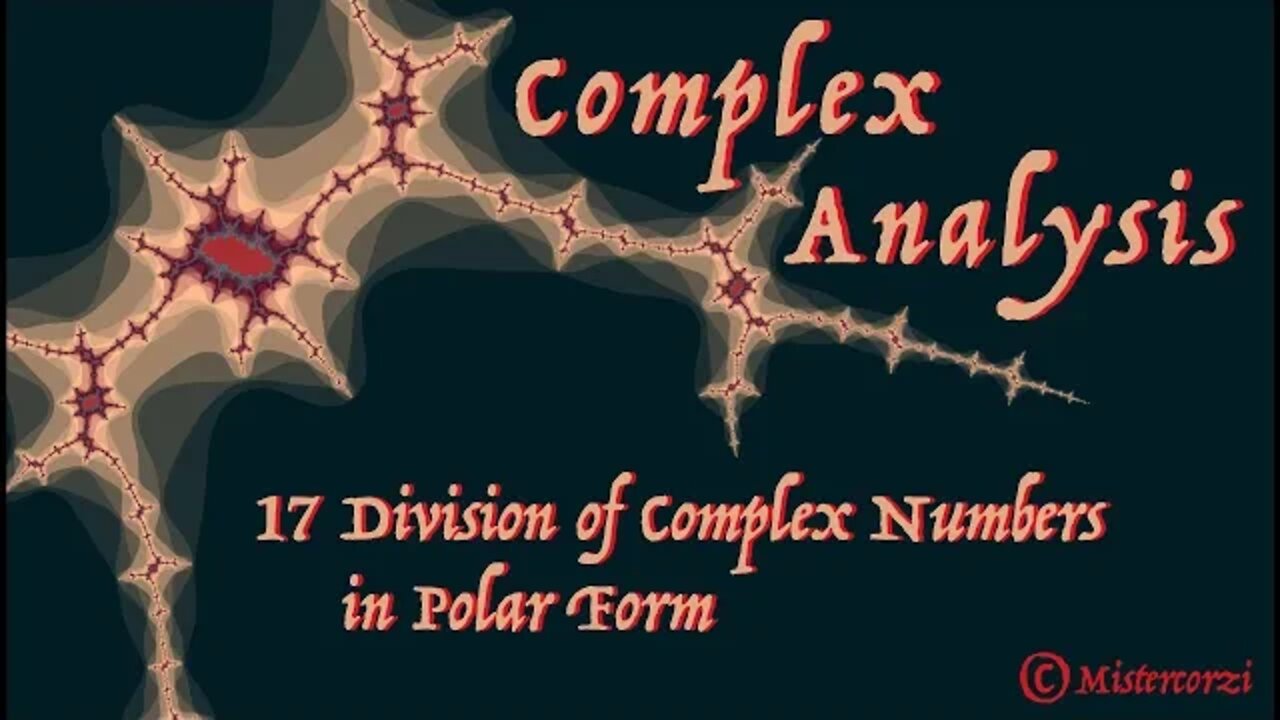Premium Only Content

17 Division of Complex Numbers in Polar Form
Dividing two complex numbers involves dividing their moduli and subtracting their arguments. An animation (using GeoGebra) is used to illustrate these ideas.
Detailed solutions of the following examples are given:
1. Use polar forms to show that i/-i = -1
2. For z=1 and w=1-i use polar forms to evaluate z/w.
3. Let z=-1+√3i and w=-√3-i
(a) Give the polar forms of z and w.
(b) Use your part (a) answer to evaluate z/w.
(c) Obtain your part (b) answer without using polar forms.
The viewer is encouraged to attempt these questions before watching the solutions.
Chapters:
00:00 Introductory animation
04:52 Mathematical derivation of results
08:55 The examples
09:09 Solution to Example 1
11:55 Solution to Example 2
15:11 Solution to Example 3
23:58 Links to the Playlist "Complex Numbers"
Previous videos in this series are:
01 What is a Complex Number?
02 Adding, Subtracting and Multiplying Complex Numbers
03 Dividing Complex Numbers
04 Complex Conjugates
05 The Field of Complex Numbers
06 The Complex Plane
07 The Modulus of a Complex Number
08 Distance on the Complex Plane
09 Properties of the Modulus of a Complex Number
10 Complex Numbers and the Unit Circle
11 The Polar Form of a Complex Number
12 The Principal Argument of a Complex Number
13 The Geometrical Effects of Multiplying by a Complex Number
14 Multiplication of Complex Numbers in Polar Form
15 The Principal Argument when Multiplying Complex Numbers
16 The Geometrical Effects of Dividing by a Complex Number
Key words: Complex division, modulus, argument, difference, subtraction, division, conjugate, principal value, Arg(z), polar form, cartesian form.
M337, Open University, Unit A1, complex analysis
-
 LIVE
LIVE
Chad Prather
12 hours agoQuit Fighting: Real Strength Starts Here!
8,621 watching -
 LIVE
LIVE
LFA TV
11 hours agoLIVE & BREAKING NEWS! | TUESDAY 11/4/25
4,000 watching -
 LIVE
LIVE
The Bubba Army
22 hours agoIS FETTERMAN GOING REPUBLICAN? - Bubba the Love Sponge® Show | 11/04/25
3,451 watching -
 LIVE
LIVE
BEK TV
23 hours agoTrent Loos in the Morning - 11/04/2025
249 watching -
 21:38
21:38
Professor Nez
20 hours agoTrump JUST BROKE the INTERNET with SAVAGE Line on Ilhan Omar!
34.7K52 -
 1:17:52
1:17:52
Dialogue works
3 days ago $11.80 earnedMartin Armstrong: This Is How World War III Starts… And It Already Has
27.4K18 -
 38:16
38:16
daniellesmithab
3 days agoAlberta Update: Getting Kids Back to the Classroom
20.8K11 -
 20:48
20:48
BlaireWhite
5 days agoTrans TikTokers Are Crashing Out (Over Nothing)
22.4K11 -
 2:07:06
2:07:06
Side Scrollers Podcast
21 hours agoHasan Piker CAUGHT LYING AGAIN + Twitch URGES LEFTIST IDEOLOGY + More | Side Scrollers
66.4K10 -
 8:40
8:40
MattMorseTV
17 hours ago $10.71 earnedSchumer just KICKED OFF the Left-Wing CIVIL WAR.
25K32